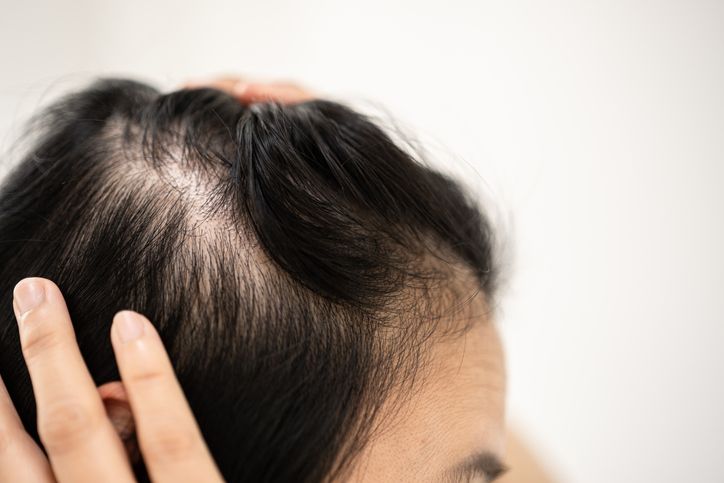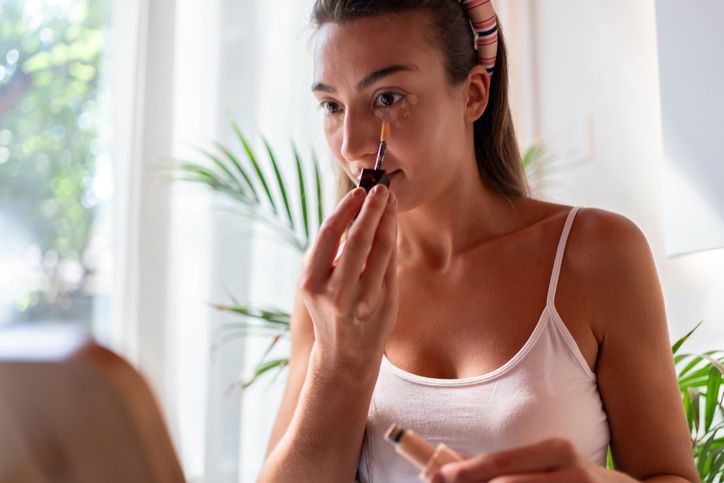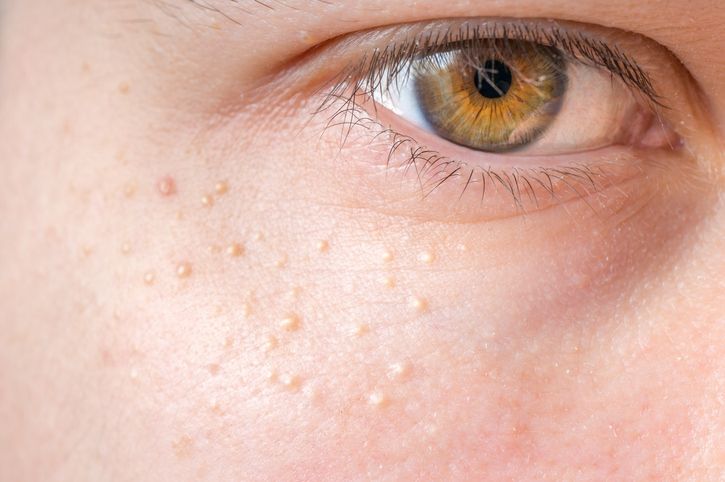- Home
- Trend
- Weight Loss Strategies
- Acne Tips
- Hair Health Information
- Blemish Removal Tips
- Acne Scar Removal Tips
- Muscle Building Techniques
- Intimate Care Tips
- Postpartum Intimate Care
- Eye Bags Wiki
- Tips for Face Slimming
- Secret of Permanent Hair Removal
- Breast Enlargement Tips
- Cure to Snoring
- Marionette Lines
- Skin-Tightening Secrets
To prevent these issues, keeping the scalp healthy is key. In this article, we dive into the importance and benefits of deep scalp cleansing, and recommend some of the most popular products to help you grow thicker, healthier hair.
1. 5 Common Types of Hair Loss & 5 Major Warning Signs — What Sets Male and Female Hair Loss Apart?

Before diving into solutions, it’s essential to understand that hair loss isn’t a one-size-fits-all issue. It comes in many forms, each with its own pattern, trigger, and progression. Below are the five most common types of hair loss:
1. Male Pattern Hair Loss
Also known as androgenetic alopecia, this type typically begins at the hairline or crown and can eventually lead to partial or total baldness. Early signs include a receding hairline that forms an "M" shape, followed by gradual thinning at the crown. This condition is mainly driven by genetics and hormones, and requires targeted prevention and treatment.
2. Female Pattern Hair Loss
Hair thinning in women usually starts at the parting line or the top of the head. Instead of an “M” shape like in men, women’s hair loss appears more diffuse, with overall thinning and a reduction in hair volume. Causes can include genetics, hormonal fluctuations, lifestyle habits, and overall health.
3. Alopecia Areata
This sudden-onset hair loss condition often starts with one or more coin-sized bald patches. These round spots become completely hairless and are commonly linked to autoimmune disorders in which the body mistakenly attacks its own hair follicles. Genetics, environmental triggers, and lifestyle may also play a role.
4. Traction Alopecia
This form of hair loss is caused by prolonged tension or pulling on the hair roots—often from tight hairstyles like ponytails, braids, buns, or the use of clips and hair rollers. Over time, this tension can lead to gradual hair loss, especially along the hairline or at the crown.
5. Frontal Fibrosing Alopecia (FFA)
A lesser-known but increasingly common type of hair loss, FFA typically affects post-menopausal women. Symptoms include a receding frontal hairline, scalp fibrosis (scarring), and in some cases, loss of eyebrow or body hair. The exact cause remains unclear, but autoimmune factors, hormones, and genetics are suspected contributors. Early treatment can help prevent permanent hair loss.
2. What’s Really Causing Your Hair to Fall Out? 6 Common Culprits Behind Hair Loss

It's normal to shed 50–100 hairs a day, but when new hair fails to grow back, it becomes a problem. Here are six major causes of hair loss:
1. Genetics (Family History)
Inherited male and female pattern baldness are the most common forms of hair loss, typically worsening with age. In men, it shows up as receding temples and bald patches; in women, it appears as overall thinning. The condition often progresses predictably and may begin as early as one's 20s.
2. Hormonal Changes & Medical Conditions
Events like pregnancy, childbirth, menopause, or thyroid imbalances can lead to temporary or permanent hair loss. For example, post-pregnancy hair shedding and menopausal hair thinning are both linked to shifts in estrogen levels. In men, excess DHT (a hormone derived from testosterone) can shrink hair follicles, leading to the classic M-shaped balding pattern. Other contributing conditions include alopecia areata, fungal infections, thyroid disease, anemia, or even trichotillomania (hair-pulling disorder).
3. Medications & Supplements
Drugs for cancer, arthritis, depression, heart disease, gout, and high blood pressure can all cause hair loss as a side effect. If you’re starting a new treatment, be sure to speak to your doctor about potential hair-related risks.
4. Radiation Therapy
Radiotherapy to the head can damage hair follicles and disrupt their growth cycle, often leading to temporary or long-lasting hair loss in the treated area. Regrowth is possible but varies depending on dosage and individual response.
5. Stress & Trauma
Emotional or physical stress can push hair follicles into a resting phase, causing diffuse shedding within a few months. Known as stress-induced hair loss or "shock loss," this type is typically temporary and improves as your stress levels stabilize.
6. Overstyling & Hair Damage
Tight hairstyles, frequent blow-drying, perming, or harsh chemical treatments can weaken hair and cause it to break or fall out. Excessive heat or tension can even cause scarring, leading to permanent damage if not addressed early.
免費體驗
F8 Hair Regrowth Treatment
1 Minute Self-Registration
Date should not be before minimal date
3. 11 Smart Ways to Prevent and Treat Hair Loss — More Than Just Changing Your Shampoo
Tackling hair loss requires a well-rounded approach that includes lifestyle changes, gentle hair care, and professional treatments. Here’s how:
6 Prevention Tips
1. Healthy Lifestyle Habits
Eat a balanced diet, get enough sleep, and stay active. Smoking has also been linked to male baldness, so quitting may benefit your hair too.
2. Handle Hair Gently
Use wide-tooth combs, avoid rough brushing (especially when wet), and skip heat styling tools like curlers and straighteners. Avoid tight ponytails, rubber bands, and clips that put pressure on the roots.
3. Limit Chemical Treatments
Minimize bleaching, dyeing, or perming. Opt for gentle shampoos and conditioners to reduce hair stress.
4. Manage Stress
Practice mindfulness, meditation, or deep breathing to lower stress levels, which in turn can improve your hair health.
5. Maintain a Healthy Weight
Avoid extreme weight loss, which can lead to hair thinning. A balanced body helps support healthy hair.
6. Protect Against UV Exposure
Excessive sun can dry out and weaken hair. Wear a hat outdoors to shield your scalp and hair from harsh UV rays.
5 Treatment Options
1. See a Doctor
If you’re experiencing noticeable hair loss, consult a healthcare provider to pinpoint the cause and get personalized treatment advice.
2. Medications
Doctors may prescribe treatments like minoxidil or ketoconazole, and in some cases, hormone therapy. Oral options like finasteride are also available—but professional guidance is essential to avoid side effects.
3. Medicated Shampoos
For male and female pattern hair loss due to telogen effluvium, specialized shampoos may help over a 3–6 month period. Look for ingredients that support follicle health, but consult a doctor first.
4. Hair Transplant Surgery
This procedure involves moving healthy hair from one area to another. It offers natural, long-lasting results, but should only be done under professional medical guidance.
5. Laser Therapy (Perfect Medical’s F8 Hair Regrowth Treatment)
Soft laser treatments like Perfect Medical’s F8 therapy use medical-grade low-level lasers to stimulate blood flow, rejuvenate follicles, and promote regrowth—all without pain or downtime. This non-invasive solution helps you regain fuller hair while preventing further loss. You can even sign up for a free trial session by clicking the link below—don’t miss it!
免費體驗
F8 Hair Regrowth Treatment
1 Minute Self-Registration
Date should not be before minimal date
FAQ

What else can increase the risk of hair loss?
Besides genetics and aging, factors like rapid weight loss, chronic illness (e.g., diabetes, lupus), poor nutrition, and ongoing stress can all contribute. A personalized care plan with your doctor is key to managing the risks.
How can I tell the difference between normal shedding and actual hair loss?
Normal shedding doesn’t change the total volume of your hair, whereas hair loss leads to visible thinning or bald spots. If you notice your hairline receding or patches appearing, it’s best to seek medical advice.
How should I use finasteride and minoxidil properly?
Minoxidil usually takes about four months of consistent use to show results and may cause initial shedding—this is normal. Finasteride is slower-acting (about three months) and suitable for long-term use in men. It’s not recommended for women, especially those who are pregnant or breastfeeding. Always consult a doctor before starting either medication.
Do anti-hair loss shampoos really work?
Their effectiveness depends on the ingredients and your individual condition. While some products contain helpful components like ketoconazole, caffeine, or biotin, only finasteride and minoxidil are medically proven. Always check with a doctor for serious hair loss concerns.
Is corticosteroid treatment effective for hair loss?
It can help in cases of inflammatory or autoimmune-related hair loss (like alopecia areata), but long-term use may have side effects. Consult your doctor to weigh the pros and cons before starting.









